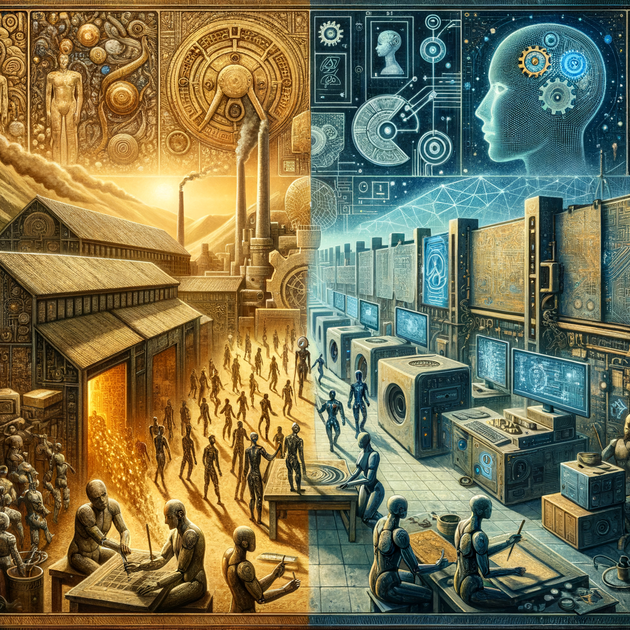The Birth of Artificial Intelligence: From Myth to Modern Computing

The concept of artificial intelligence (AI) evokes images of futuristic machines and sci-fi narratives. But did you know that the idea of AI is steeped in ancient lore and myths? From early imaginings of sentient beings forged by master craftsmen to the sophisticated, intelligent systems we see today, the journey of AI is as fascinating as it is profound.
The Dawn of AI: Ancient Myths to Modern Concepts
Long before silicon and software, ancient myths were filled with stories of automata and artificial beings. For instance, Greek mythology speaks of Talos, a bronze giant designed to protect the island of Crete. Such stories stirred human curiosity about creating life-like intelligence.
It wasn’t until the mid-20th century, however, that AI began to take on its modern form. The term “Artificial Intelligence” was coined by John McCarthy in 1956 during the iconic Dartmouth Conference. This landmark event is often considered the birth of AI as a formal field of study. McCarthy, along with other visionaries like Marvin Minsky, Allen Newell, and Herbert A. Simon, sparked a revolution in computer science and cognitive research.
In 1950, British mathematician and computer scientist Alan Turing published his seminal paper, “Computing Machinery and Intelligence,” proposing the Turing Test—a criterion for determining a machine’s capability to exhibit intelligent behavior equivalent to, or indistinguishable from, that of a human.
Meet John McCarthy: The Father of Modern AI
John McCarthy, born on September 4, 1927, was a trailblazer in AI who left an indelible mark on the field. His journey began in Boston, Massachusetts, and took him through the halls of Caltech and Princeton University. An early and brilliant mind, McCarthy’s contributions extended far beyond just coining the term “Artificial Intelligence.”
Shaping the Future of AI
One of McCarthy’s most lasting legacies is the Lisp programming language, developed in 1958. Lisp revolutionized AI research with its ability to handle symbolic reasoning and data manipulation effortlessly.
The Influence of Lisp on AI Development
Lisp, or “LISt Processing,” was designed to support advanced computations, making it an ideal fit for AI applications.
Key highlights include:
- Natural Language Processing (NLP): Parsing and generating human languages.
- Expert Systems: Emulating the decision-making pathways of human experts.
- Machine Learning: Implementing symbolic-based approaches like decision trees and clustering.
Other Milestones in McCarthy’s Career
- Time-Sharing Systems: Pioneering the concept, critical for modern operating systems and cloud computing.
- Stanford AI Laboratory (SAIL): Founding SAIL, which became a powerhouse of AI research.
- Situation Calculus: Formalizing reasoning methods about change in AI systems.
The Enduring Legacy of Lisp
Although the dominance of Lisp in AI has waned with the rise of languages like Python, its influence persists. Lisp’s flexibility and pioneering ideas remain central to certain niche applications and by enthusiasts who appreciate its unique power.
Closing Thoughts: The Ever-Evolving Journey of AI
From myths to machines, the evolution of AI is a testament to human ingenuity and our relentless quest for knowledge. As we continue to push the boundaries of what AI can achieve, it is crucial to remember and honor the pioneers like John McCarthy, whose contributions laid the groundwork for today’s advancements.
What do you think? How will the ongoing evolution of AI shape our future? Share your thoughts in the comments below!
